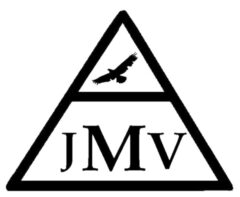Bradley Fujiuchi, Ehab G Daoud
Cite
Fujiuchi B, Daoud EG. SMART Trigger versus Flow and Pressure trigger performance during auto-PEEP. J Mech Vent 2023; 4(3):108-113.
Abstract
Background
Intrinsic positive end-expiratory pressure (auto-PEEP) is a common problem in mechanically ventilated patients, which can lead to adverse effects on patients comfort, hemodynamics, lung mechanics and gas exchange. Triggering systems play a crucial role in the delivery of mechanical ventilation, and advancements in smart triggering technology aim to optimize patient-ventilator synchrony. This bench study aims to compare the performance of the novel SMART Trigger to traditional pressure and flow triggers in the context of auto-PEEP.
Methods
A lung model simulating severe obstructive pattern with high compliance (80 ml/cmH2O) and high resistance 30 cmH2O/L/s was connected to the Panther 5 ventilator (Origin Medical, California, USA). The mode was set at Volume Controlled with a tidal volume of 700 ml and mandatory breath per min (BPM) of 10/min and Inspiratory time of 2 seconds to intentionally create auto-PEEP. Simulated spontaneous breaths set at 20 BPM with increasing muscle pressure (Pmus) from -1 to maximum of -25 or till full trigger of all breaths. Three different triggering systems were evaluated: SMART Trigger (ST sensitivity 1 to 7), pressure trigger (-1 cmH2O), and flow trigger (1 l/min). The range of auto-PEEP levels induced increased incrementally with the increase in the respiratory rate ranging from 3 cmH2O for 10 BPM, 8 for 15 BPM, to 13 for 20 BPM. The following parameters were assessed for each triggering system: trigger sensitivity (defined as the number of breaths triggered above the mandatory breaths), and the trigger response time (time it takes from the beginning of muscle effort to the initiation of the breath.
Results
100% of the breaths were triggered at Pmus (cmH2O) of -15 in the pressure trigger, -25 in flow trigger, -3 for ST1, -9 for ST2, -10 for ST3, -10 for ST4, -12 for ST5, -18 for ST 6, and -22 for ST 7.
Trigger time (msec) for flow was 0.135 ± 0.02, for pressure 0.141 ± 0.04, for ST 1-4: 0.076 ± 0.03, for ST 5-7: 0.104 ± 0.04. Multivariate analysis of variance test showed significant difference between the time to trigger P <0.001.
Conclusion
This bench study highlights the potential advantages of SMART Trigger technology over conventional pressure and flow triggers during auto-PEEP. The SMART Trigger enhanced sensitivity and rapid response might contribute to improved patient-ventilator synchrony. Further research and clinical studies are warranted to validate these findings and explore the impact of smart trigger technology on patient outcomes in real-world scenarios.
Keywords: SMART Trigger, Auto-PEEP, Trigger time
References
| 1. Navalesi P, Maggiore S. Chapter 10. Positive end-expiratory pressure. Tobin M.J.(Ed.), Principles and Practice of Mechanical Ventilation, 3e. McGraw Hill; 2013. | |||
| 2. Brandolese R, Broseghini C, Polese G, et al. Effects of intrinsic PEEP on pulmonary gas exchange in mechanically ventilated patients. Eur Respir J 1993; 6(3):358-363. https://doi.org/10.1183/09031936.93.06030358 PMid:8472826 | |||
| 3. Hamahata NT, Sato R, Daoud EG. Go with the flow-clinical importance of flow curves during mechanical ventilation: A narrative review. Can J Respir Ther 2020; 56:11-20. https://doi.org/10.29390/cjrt-2020-002 PMid:32844110 PMCid:PMC7427988 | |||
| 4. Chatburn RL, Mireles-Cabodevila E. Chapter 3. Basic Principles of Ventilator Design. In: Tobin MJ. eds. Principles and Practice of Mechanical Ventilation, 3e. McGraw Hill; 2013. | |||
| 5. Khalil MM, Elfattah NM, El-Shafey MM, et al. Flow versus pressure triggering in mechanically ventilated acute respiratory failure patients. Egypt J Bronchol 2015; 9:198-210. https://doi.org/10.4103/1687-8426.158103 | |||
| 6. Navalesi P, Colombo D, Della Corte F. NAVA ventilation. Minerva Anestesiol 2010; 76(5):346-352. | |||
| 7. Tobin M, Lodato R. PEEP, Auto-PEEP and waterfalls. Chest 1989; 96(3):449-451. https://doi.org/10.1378/chest.96.3.449 PMid:2670461 | |||
| 8. Simonete A, Alberti da Silva N, Franck CL. Analysis of mechanical power during pressure-controlled ventilation in patients with severe burns. J Mech Vent 2023; 4(2):66-71. https://doi.org/10.53097/JMV.10076 | |||
| 9. Clement KC. Ventilator triggering. J Pediatr Intensive Care 2013; 2(1):11-18. | |||
| 10. Thille AW, Lyazidi A, Richard JC, et al. A bench study of intensive-care-unit ventilators: new versus old and turbine-based versus compressed gas-based ventilators. Intensive Care Med 2009; 35(8):1368-1376. https://doi.org/10.1007/s00134-009-1467-7 PMid:19352622 PMCid:PMC2873304 | |||
| 11. Sottile PD, Albers D, Smith BJ, et al. Ventilator dyssynchrony – Detection, pathophysiology, and clinical relevance: A Narrative review. Ann Thorac Med 2020; 15(4):190-198. https://doi.org/10.4103/atm.ATM_63_20 PMid:33381233 PMCid:PMC7720746 | |||
| 12. Sassoon CSh. Triggering of the ventilator in patient-ventilator interactions. Respir Care 2011; 56(1):39-51. https://doi.org/10.4187/respcare.01006 PMid:21235837 | |||
| 13. Gholami B, Phan TS, Haddad WM, et al. Replicating human expertise of mechanical ventilation waveform analysis in detecting patient-ventilator cycling asynchrony using machine learning. Comput Biol Med 2018; 97:137-144. https://doi.org/10.1016/j.compbiomed.2018.04.016 PMid:29729488 | |||
| 14. Sassoon CS, Giron AE, Ely EA, et al. Inspiratory work of breathing on flow-by and demand-flow continuous positive airway pressure. Crit Care Med 1989; 17(11):1108-1114. https://doi.org/10.1097/00003246-198911000-00004 PMid:2676347 | |||
| 15. Chatburn RL. Chapter 2. Classification of Mechanical Ventilators and Modes of Ventilation. In: Tobin MJ. eds. Principles and Practice of Mechanical Ventilation, 3e. McGraw Hill; 2013. | |||
| 16. Thiagarajan RR, Coleman DM, Bratton SL, et al Inspiratory work of breathing is not decreased by flow-triggered sensing during spontaneous breathing in children receiving mechanical ventilation: a preliminary report. Pediatr Crit Care Med 2004; 5(4):375-378. https://doi.org/10.1097/01.PCC.0000128604.69914.60 PMid:15215009 | |||
| 17. Hamahata NT, Sato R, Yamasaki K, et al. Estimating actual inspiratory muscle pressure from airway occlusion pressure at 100 msec. J Mech Vent 2020; 1(1):8-13. https://doi.org/10.53097/JMV.10003 | |||
| 18. Chatburn RL. Simulation-based evaluation of mechanical ventilators. Respir Care 2018; 63(7):936-940. https://doi.org/10.4187/respcare.06267 PMid:29941669 |
